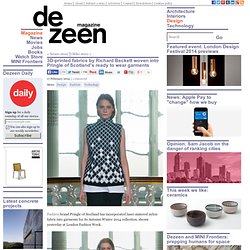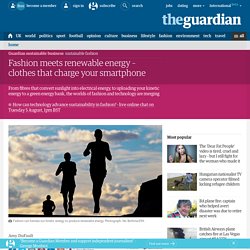

Future Technology Predictions. What is Tor? A beginner's guide to the privacy tool. Until this year, the internet privacy tool Tor was scarcely heard of outside the tech community.

Since revelations about the surveillance strategies of US and UK spies, Tor has become a focus of criticism, accused of facilitating a dangerous "dark web" of paedophiles, drug dealers and arms traders. But while the NSA has tried to crack its security, Tor's principal source of funding has been other parts of the US government. While a criminal contingent may use the site to disguise identities, its creators point to a wider group of legitimate users including journalists, activists, law enforcement professionals, whistleblowers and businesses.
In a year Tor has grown from 500,000 daily users worldwide to more than 4 million users, provoking an increasingly public debate along the way. What is Tor? The Tor project is a non-profit organisation that conducts research and development into online privacy and anonymity. Tor Project: Anonymity Online. Multitasking Alters Your Gray Matter. Brain scans show that simultaneously using smartphones, laptops, and tablets (all while watching TV, probably) may change the structure of your brain.

Media multitaskers have lower gray-matter density in certain brain regions compared to people who just use one device occasionally, according to a study published in PLoS One this week. Previous studies have found connections between high media-multitasking activity and poor attention in the face of distraction, along with depression and anxiety. Now, Kep Kee Loh and Ryota Kanai from University College London wanted to see how “concurrent consumption” of multiple media forms affects neural processes. LSN : Seed : Light touch: Cirque du Soleil draws on drones for new film. Will tech and fashion decide each other's future? As spring/summer 15 welcomes a new generation of collaboration between fashion houses and tech giants, Steve Salter investigates how technology is shaping fashion’s future.

"I think the most surprising thing has been the speed at which technology is being adopted and how ubiquitous it becomes," Natalie Massenet noted when I interviewed her last year. "You can be left in the dust," she warned. It is a combination of this fear and the thrill of pushing the industry forward, that nudges fashion into the arms of technology. Both pursuits tease today with the fruits of tomorrow. Increasingly, as they acknowledge one another's strengths and weaknesses, both are seeing the value in sowing their seeds together and ripening as one. Despite packing their latest iPhone with new streamlined features within various sexily stretched handsets and offering a glimpse into everyday monetary exchanges, it was Apple’s move into the domain of wearable tech that left the greatest impression.
3D-printed fabrics woven into Pringle of Scotland's AW14 garments. Fashion brand Pringle of Scotland has incorporated laser-sintered nylon fabric into garments for its Autumn Winter 2014 collection, shown yesterday at London Fashion Week.

Pringle of Scotland collaborated with material scientist Richard Beckett to create a series of 3D-printed fabrics for the collection using selective laser sintering (SLS). To produce textiles that could move like traditional cloths, Beckett chose specific machinery that could create the tiny nylon parts needed to keep the material flexible.
"I used an EOS Formiga P100 SLS system due to its ability to build at high definition, one of the few systems that would allow you to build such complex movable parts at this size," Beckett told Dezeen. The printed sections were then handwoven into the knitwear through small hooks on the underside or stitched on top of the wool.
THE FUTURE OF CUSTOMER SERVICE. Fashion meets renewable energy – clothes that charge your smartphone. When you think about how fashion will work alongside technology in the future, it might be hard to break from science-fiction-heavy ideas.

However, fashionably using solar, wind and even kinetic energy to charge devices, keep us connected and even donate our energy to non-profits is being explored by a number of design houses. Solar textiles Meg Grant, of Solar Fiber, says she and co-collaborators Aniela Hoitink, Marina Toeters, Ralf Jacobs, and Professor Derek Schlettwein from Giessen University are already pushing the textile boundaries in terms of solar fibres. "If you look around you, textiles cover so many surfaces, so why not give them a 'super power' that can take advantage of this, like solar energy harvesting," says Grant.
The idea behind Solar Fiber is a flexible photovoltaic fibre that converts sunlight energy into electrical energy via a yarn that can be worked into all sorts of fabrics. Kinetic energy Energy harvesting The sustainable fashion hub is funded by H&M. Movie: CuteCircuit on smart textiles and digital fashion. With smart textiles we can "download new colours or patterns" to our clothes Dezeen and MINI Frontiers: Francesca Rosella of interactive fashion brand CuteCircuit claims advances in digital "smart" fabrics will revolutionise the fashion industry, allowing us to download new styles for our clothes rather than buying new garments.

"We are living in a digital future, so we do not need to sell 10,000 skirts," says Rosella. The Future Laboratory. The Future Laboratory is recognised internationally for its innovative approach to trend forecasting, consumer insight and brand strategy.

Via our global network and in-house team of trend analysts and ethnographic researchers, we offer clients qualitative and quantitative insights into future consumers and how to target them. Since 2001 we have developed a consultancy that unites editorial work, independent research and creative thinking of the highest calibre with engaged, bespoke client operations that respond to a brand or company's individual need for research and enquiry.